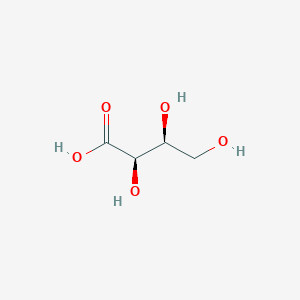Details of Metabolite
| Full List of Protein(s) Regulating This Metabolite | ||||||
|---|---|---|---|---|---|---|
| Transferases (EC 2) | ||||||
| Deacetylase sirtuin-5 (SIRT5) | Click to Show/Hide the Full List of Regulating Pair(s): 1 Pair(s) | |||||
| Detailed Information |
Protein Info
 click to show the details of this protein click to show the details of this protein
|
|||||
| Regulating Pair |
Experim Info
 click to show the details of experiment for validating this pair click to show the details of experiment for validating this pair
|
[1] | ||||
| Introduced Variation | Knockout of Sirt5 | |||||
| Induced Change | Threonic acid concentration: increase (FC = 1.29) | |||||
| Summary | Introduced Variation
|
|||||
| Disease Status | Healthy individual | |||||
| Details | It is reported that knockout of Sirt5 leads to the increase of threonic acid levels compared with control group. | |||||
| References | |||||
|---|---|---|---|---|---|
| 1 | Metabolomics Based Identification of SIRT5 and Protein Kinase C Epsilon Regulated Pathways in Brain. Front Neurosci. 2018 Jan 30;12:32. | ||||
If you find any error in data or bug in web service, please kindly report it to Dr. Zhang and Dr. Mou.

